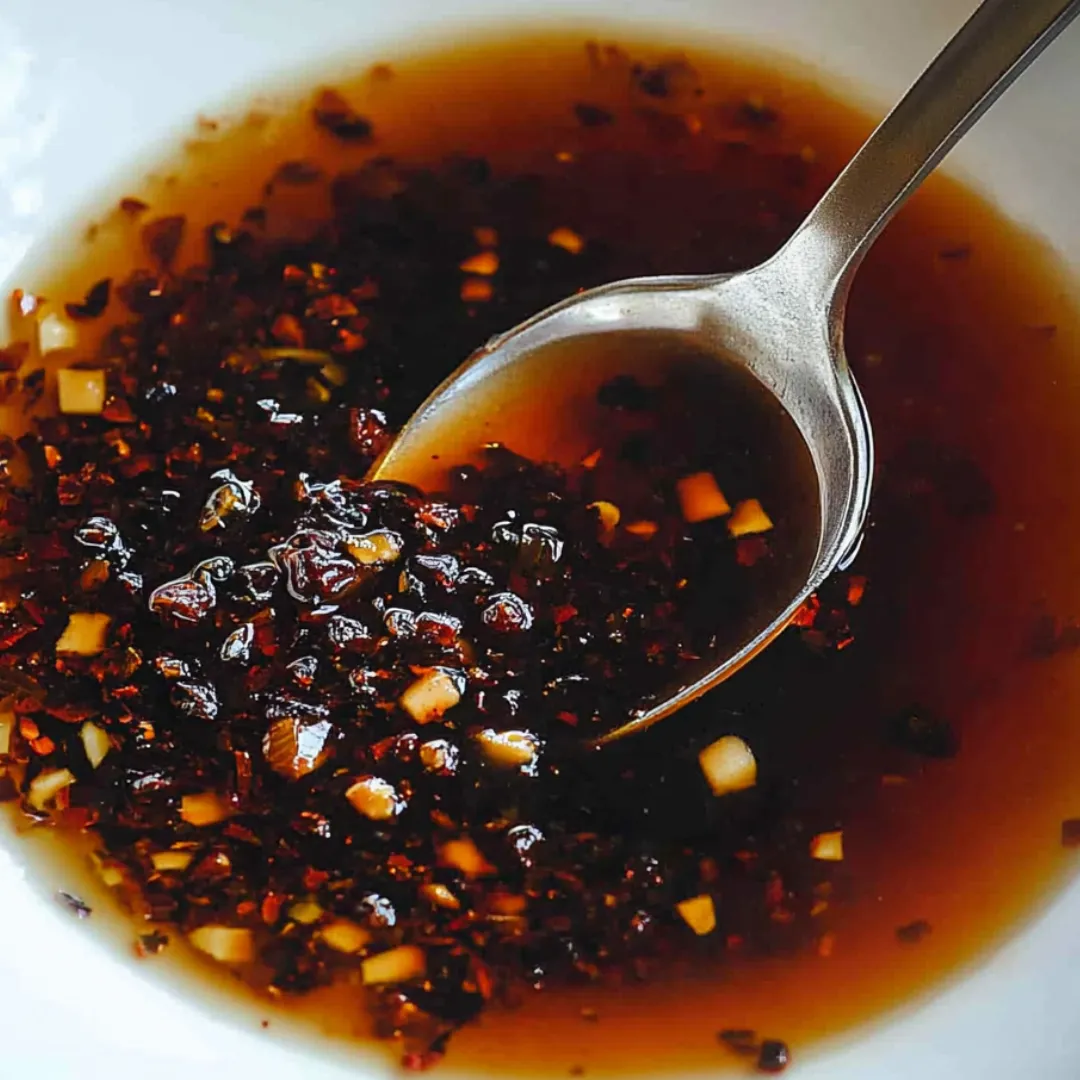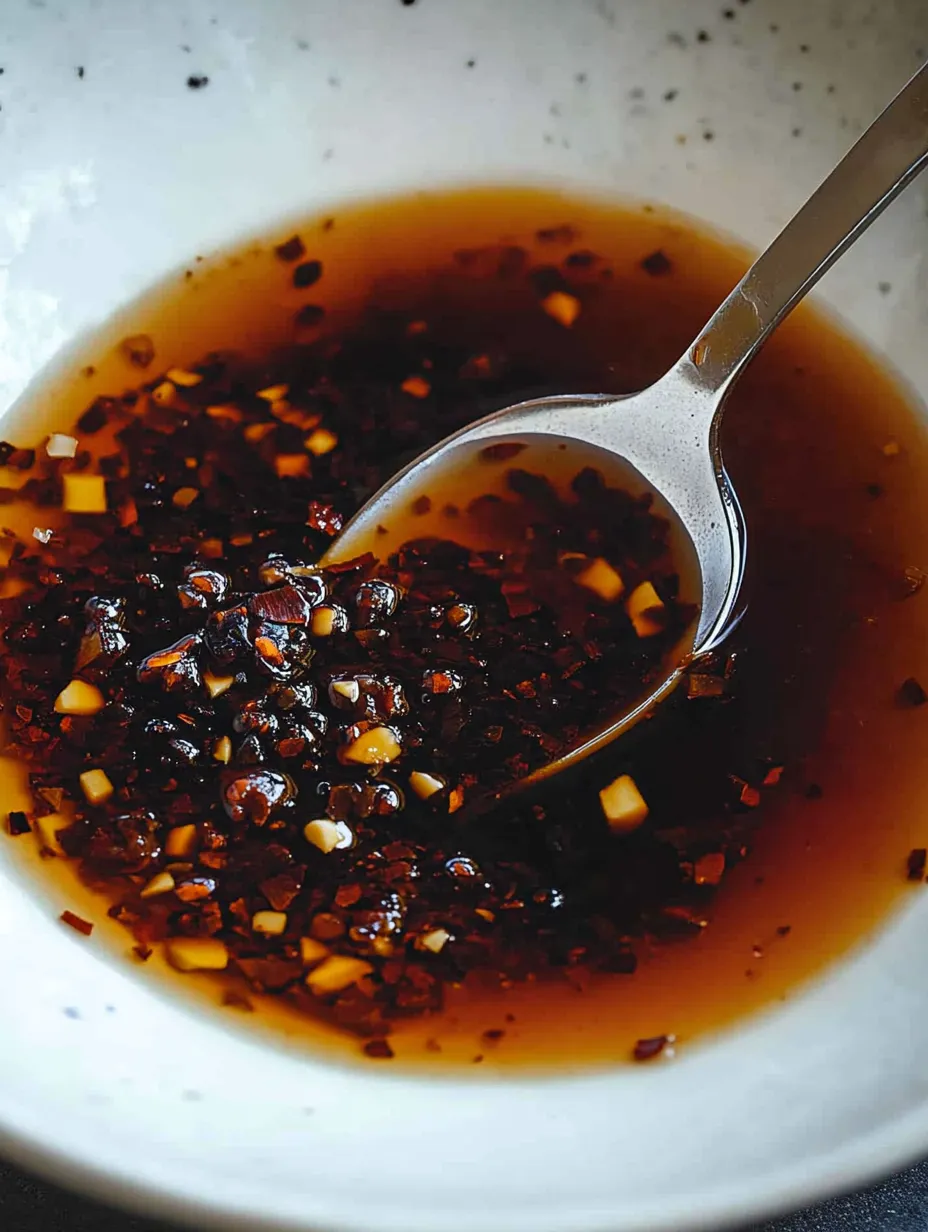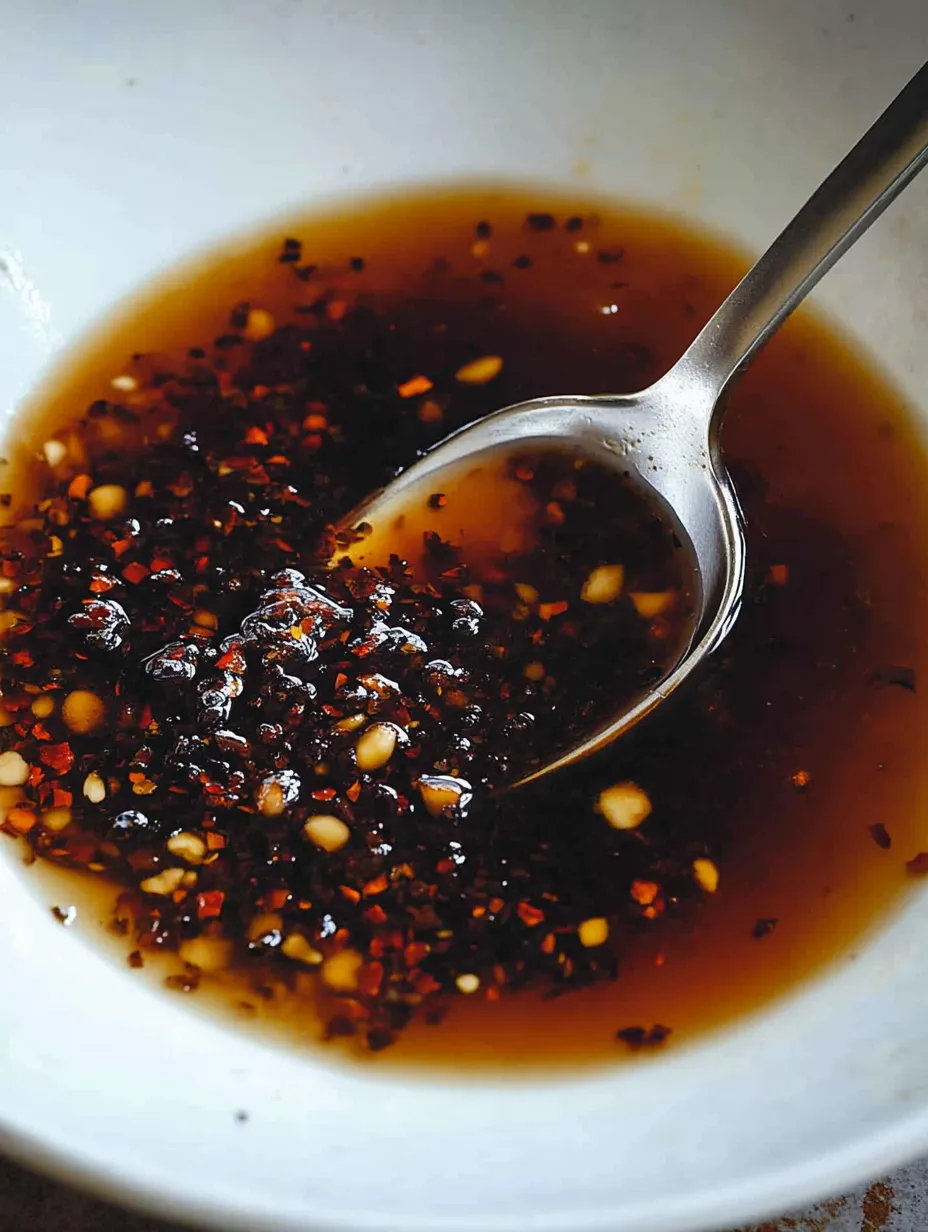 Pin it
Pin it
This Wet Wet Sauce brings incredible depth and complexity to any meal without much effort. Originally shared by TikToker Cassie Yeung, this sauce has taken the culinary world by storm – and with good reason. Think of it as chili oil's more interesting cousin, packing layers of flavor that elevate everything from simple dumplings to grilled meats. The combination of aromatic ingredients, umami-rich sauces, and the perfect balance of heat creates something truly special that you'll want to keep in your refrigerator at all times.
The first time I made this sauce, I was genuinely surprised by how transformative it was. I drizzled it over some plain steamed dumplings and was instantly transported by the complexity of flavors. My family now requests 'those dumplings with the special sauce' at least once a week, not realizing it's the sauce, not the dumplings, that's the star of the show.
Essential Ingredients
- Green onions, ginger, and garlic: This aromatic trio creates the foundation of flavor. Look for firm ginger with smooth skin, and garlic cloves that feel heavy and solid with no sprouting.
- Gochugaru: These Korean red chili flakes provide a vibrant color and distinctive spice level that's more complex than regular red pepper flakes. For authentic flavor, source these from an Asian market or specialty store.
- White sesame seeds: Choose seeds that appear plump and uniform in color for the best nutty undertones and delightful texture.
- Toasted sesame oil: The dark amber color indicates proper toasting; this provides an unmistakable depth that defines many Asian dishes. A little goes a very long way.
- Vegetable oil: Use a neutral oil with a high smoke point. Grapeseed or sunflower oil works perfectly as they won't compete with the other flavors.
- Soy sauce: Look for naturally brewed soy sauce for an authentic flavor profile with complex fermented notes rather than just saltiness.
- Oyster sauce: This thick, caramel-colored sauce brings sweet-savory complexity. Premium brands offer better flavor with fewer additives.
- Rice vinegar: Choose clear, unseasoned rice vinegar for a clean, mild acidity that balances the richness of the oils.
 Pin it
Pin it
Step-By-Step Preparation
- Prepare your aromatics and spices:
- Finely chop the green onions, mince the garlic cloves until they release their fragrant oils, and grate the ginger to expose its fiery essence. Place these in a large, heat-resistant bowl along with the gochugaru and sesame seeds, arranging them so they'll be fully submerged when the oil is added.
- Heat the oil properly:
- In a heavy-bottomed saucepan, warm your vegetable oil over medium heat until it reaches the perfect temperature – hot enough to bloom the spices but not so hot that it smokes or sputters aggressively. Watch carefully for tiny ripples on the surface indicating it's ready.
- Create the flavor infusion:
- With a steady hand, carefully pour the heated oil over your prepared aromatics and spices. The mixture will immediately begin to bubble and sizzle as the heat extracts the essential oils and flavors from each ingredient. The aroma that rises will be intensely fragrant.
- Allow for proper cooling:
- Stir the mixture gently with a heat-resistant utensil, ensuring all ingredients are coated evenly with the oil. Let it cool for approximately 10-15 minutes, during which time the flavors will continue to develop and infuse into the oil.
- Incorporate liquid elements:
- Once the oil mixture has cooled slightly but remains warm, add the soy sauce, oyster sauce, and rice vinegar. Stir thoroughly to create an emulsion where all flavors harmonize into a cohesive, complex sauce.
- Taste and adjust:
- Before finalizing your sauce, take a small sample and adjust the seasonings if necessary. Perhaps a touch more vinegar for brightness or an additional drizzle of sesame oil for richness.
- Transfer for storage:
- Allow the sauce to cool completely before transferring to an airtight container. This prevents condensation from forming inside the container which could compromise preservation.
I've found the garlic in this sauce particularly transformative. After being gently bloomed in the hot oil, it loses its harsh bite and develops a sweet, nutty quality that's completely addictive. My grandmother always claimed garlic was nature's medicine, and whether or not that's scientifically accurate, there's something undeniably comforting about its presence in this sauce.
Cultural Significance
The foundation of this sauce draws from traditional Chinese and Korean flavor profiles that have been perfected over centuries. The combination of chili and oil appears in many Asian cuisines, from Sichuan's famous chili oil to Korean gochujang-based sauces. What makes this particular recipe special is how it balances these traditional elements with modern accessibility. In many Asian households, condiments like this are considered essential for bringing life to simple foods. A humble bowl of rice or plain noodles becomes a feast with just a spoonful of something like Wet Wet Sauce. This approach to cooking – where a well-crafted condiment transforms basic ingredients – represents culinary wisdom worth embracing in any kitchen.
 Pin it
Pin it
Pairing Suggestions
The versatility of Wet Wet Sauce truly shines when paired thoughtfully with different foods. Beyond the obvious dumpling pairing, consider drizzling it over a simple roasted chicken to transform an everyday meal into something special. The sauce cuts through the richness of the meat while complementing its savory qualities. For vegetable dishes, try tossing steamed broccoli or blanched green beans with a light coating of the sauce. The contrast between the fresh, crisp vegetables and the complex, spicy oil creates a beautiful harmony on the palate. Even something as simple as plain tofu becomes a delicacy when dressed with this sauce. Noodle dishes particularly benefit from Wet Wet Sauce. Whether it's a bowl of ramen, rice noodles, or even Italian pasta, a spoonful stirred through at the end adds dimension and interest that elevates the entire dish. The oil component clings to the noodles, ensuring every bite is flavorful.
My final thought on this remarkable sauce is that it represents what I love most about home cooking – the ability to create something greater than the sum of its parts with minimal effort. While restaurant dining has its place, there's something deeply satisfying about having a jar of homemade Wet Wet Sauce in your refrigerator, ready to transform the simplest meal into something memorable. It's become my secret weapon for elevating everyday cooking and impressing guests who can never quite identify what makes my dishes so flavorful.
Frequently Asked Questions
- → How long does Wet Wet Sauce keep in the fridge?
- The sauce keeps well in an airtight container for up to 3 weeks in the refrigerator.
- → What can I serve with Wet Wet Sauce?
- It's great with dumplings, rice, noodles, grilled meats, or as a marinade for chicken or pork.
- → Can I make it less spicy?
- Yes, simply reduce the amount of Korean chili flakes to suit your taste preferences.
- → Is there a substitute for oyster sauce?
- You can use hoisin sauce or mushroom sauce if you want to make it vegetarian.
- → Can I add other ingredients to customize it?
- Absolutely! Try adding a bit of sugar, MSG, or Sichuan peppercorns for different flavor profiles.
